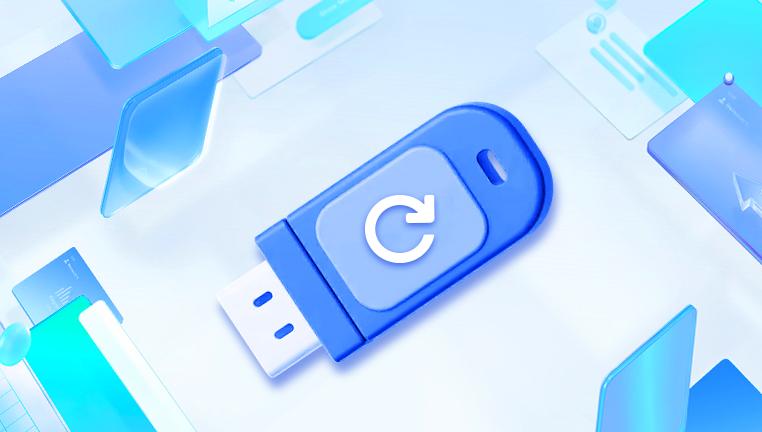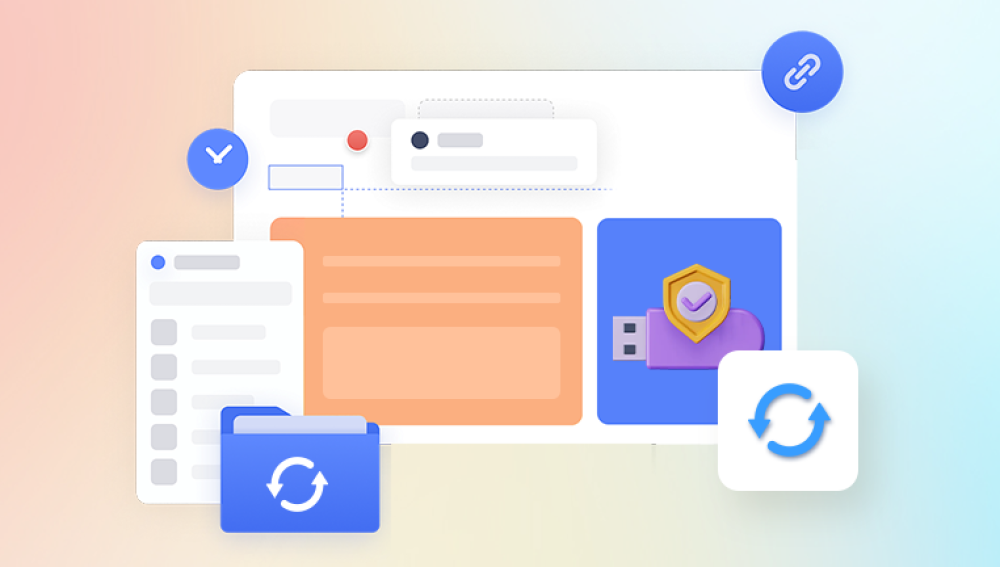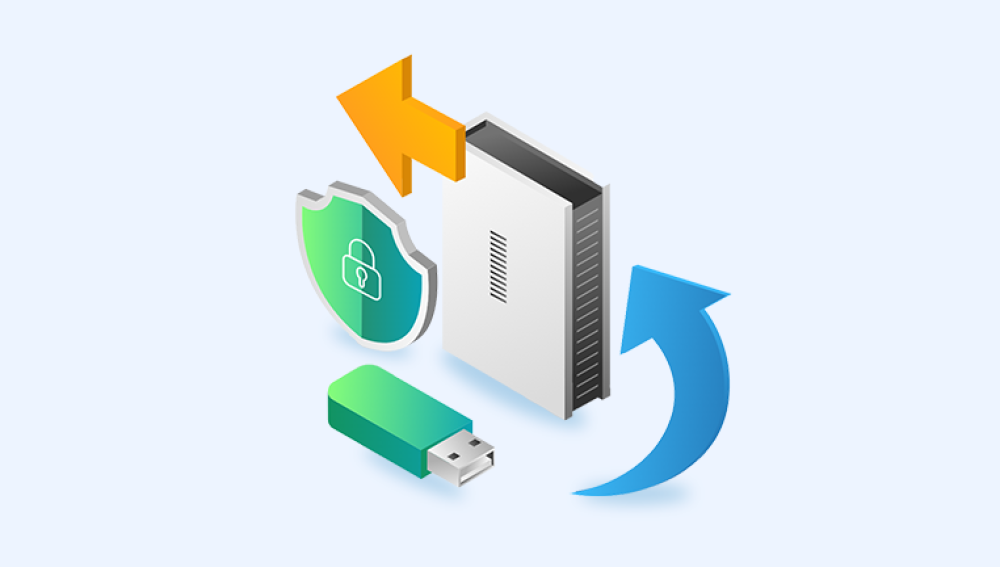I. Recover a usb drive that is not recognized
A USB drive that is not recognized can be a frustrating problem. It could be due to various reasons, including hardware issues, software problems, or driver conflicts.
II. Check the Physical Connection
Inspect the USB Port: First, check the USB port on your computer. Make sure it is clean and free of debris. Sometimes, a small piece of dust or lint can prevent a proper connection. Use a can of compressed air to gently blow out any dirt from the port.
Try a Different USB Port: Plug the USB drive into another USB port on your computer. This helps determine if the issue is specific to a particular port. If the drive is recognized in the new port, then the original port may be faulty.

Check the USB Cable: If you are using a USB extension cable or hub, remove it and connect the USB drive directly to the computer. The cable or hub could be the cause of the problem. Also, check the USB drive's cable for any signs of damage, such as frayed wires or a loose connector. If damaged, consider replacing the cable.
III. Examine the USB Drive
Look for Physical Damage: Inspect the USB drive itself for any visible signs of damage. Check for cracks, dents, or signs of overheating. If the drive has been dropped or exposed to extreme conditions, it may have internal damage. In such cases, it is advisable to seek professional data recovery services.
Check the LED Indicator: Many USB drives have an LED indicator that lights up when the drive is connected and powered on. If the LED does not light up, it could indicate a problem with the power supply to the drive or a faulty drive.
IV. Update or Reinstall USB Drivers
Update Drivers Automatically: In Windows, go to the Device Manager. Right - click on the "Universal Serial Bus controllers" category and select "Update driver". Follow the on - screen instructions to let Windows search for and install the latest drivers for your USB devices.
Reinstall Drivers: If updating the drivers does not work, you can try reinstalling them. In the Device Manager, right - click on the specific USB device (such as the USB drive) and select "Uninstall device". After uninstalling, restart your computer. Windows will automatically detect the USB device and install the default drivers.
Install Manufacturer - Specific Drivers: For some USB drives, especially those with special features or encryption, you may need to install the drivers provided by the manufacturer. Visit the manufacturer's website, find the support section for your specific USB drive model, and download the latest drivers.
V. Check for Software Conflicts or Malware
Scan for Malware: Run a full - system malware scan using your antivirus software. Malware can sometimes interfere with the proper functioning of USB drives. If any threats are detected, quarantine or remove them according to the antivirus software's instructions.
Check for Conflicting Programs: Some programs may conflict with the USB drive. Temporarily disable any recently installed programs or those that are known to interact with storage devices. For example, some backup software or disk management tools might cause issues. After disabling the programs, check if the USB drive is recognized.
VI. Use Disk Management Tools
Open Disk Management: In Windows, press the Windows key + R, type "diskmgmt.msc", and press Enter. This will open the Disk Management utility. In Disk Management, check if the USB drive is listed. If it is listed but not recognized, it may have a problem with its partition or file system.
Initialize the Disk: If the USB drive is shown as "Uninitialized" in Disk Management, right - click on the disk and select "Initialize Disk". Follow the on - screen instructions to initialize the disk. This will prepare the disk for use, but it will erase all data on the drive, so make sure to back up any important data first.
Check and Repair Disk Errors: In Disk Management, right - click on the USB drive's partition and select "Properties". Go to the "Tools" tab and click on "Check" under the "Error - checking" section. This will scan the disk for errors and attempt to repair them.
VII. Format the USB Drive
Backup Your Data: Before formatting the USB drive, make sure to back up any important data. Formatting will erase all data on the drive. You can copy the data to another storage device, such as an external hard drive or cloud storage.
Format the Drive: In Disk Management, right - click on the USB drive's partition and select "Format". Choose the file system you want to use, such as FAT32. NTFS, or exFAT. FAT32 is compatible with most devices, but has limitations on file size. NTFS is better for Windows - based systems, and exFAT is a good choice for cross - platform use. Follow the on - screen instructions to complete the formatting process.
VIII. Use Third - Party Recovery Tools
Panda Assistant is an efficient and user-friendly data recovery software that can help you recover lost or deleted files from a USB drive. Whether you've accidentally deleted important documents, photos, or other files, Panda Assistant offers a reliable solution for retrieving your data. Here’s how it works:
Scanning the USB Drive: Once you install Panda Assistant, you can connect your USB drive to the computer. The software will scan the drive for any recoverable files, searching through both deleted and corrupted files. This process ensures that all possible data is located, including files that are no longer visible.
Previewing Recoverable Files: After the scan, Panda Assistant provides a preview of all the recoverable files, allowing you to choose exactly what you want to restore. This feature makes it easy to selectively recover files instead of restoring everything, saving both time and storage space.
Easy Recovery Process: Once you’ve identified the files you need, Panda Assistant allows you to recover them with a few simple clicks. The software restores the files to a specified location on your computer or another drive. It supports a wide range of file types, including documents, images, videos, and more.
Support for Different USB Formats: Panda Assistant can recover data from a variety of USB formats, including FAT, NTFS, exFAT, and others. Whether the drive has been corrupted or the files have been accidentally deleted, the software is designed to handle different file systems with ease.
IX. Seek Professional Help
Data Recovery Services: If the above methods do not work and you have important data on the USB drive, it is advisable to contact a professional data recovery service. These services have specialized equipment and expertise to recover data from damaged or unrecognized drives. However, they can be expensive, and the success rate depends on the extent of the damage.
Manufacturer's Support: Contact the manufacturer of the USB drive for support. They may be able to provide specific troubleshooting steps or offer a replacement if the drive is under warranty and found to be defective.
X. Prevention Tips
Properly Eject USB Drives: Always use the "Safely Remove Hardware" option in Windows or the equivalent in other operating systems before unplugging a USB drive. This helps prevent data corruption and damage to the drive.
Keep Drivers Updated: Regularly update the drivers for your USB devices to ensure compatibility and optimal performance.
Protect Against Malware: Keep your antivirus software updated and run regular scans to protect your computer and USB drives from malware.
Handle USB Drives Carefully: Avoid dropping or exposing USB drives to extreme temperatures, humidity, or magnetic fields. Store them in a safe place when not in use.




